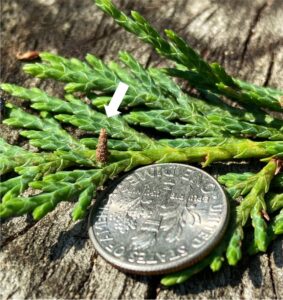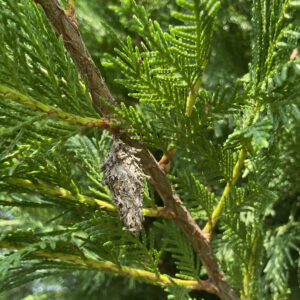There is a potential for new boxwood blight infections this FRIDAY and SATURDAY throughout much of NJ – especially central regions. Increased temperatures and prolonged periods of leaf wetness will contribute to the spread of boxwood blight infections.
-
It is time to begin protective fungicide applications in high value areas if you have not already done so!
- Protective fungicide applications should remain in effect or be initiated immediately for Boxwood Blight in “Infection risk or High Risk areas”.
- If your area is not listed (throughout all of NJ please visit the USPEST.ORG Boxwood Blight Risk Model – CLICK HERE TO CHECK YOUR LOCAL PREDICTIONS
Boxwood Blight risk-model information, considerations, and links:
| Boxwood Blight Risk Assessment as of 3/22/2023 | |||||||||
| Region | Location | CODE | 22-Mar | 23-Mar | 24-Mar | 25-Mar | 26-Mar | 27-Mar | NOTES |
| Southern | Upper Deerfield | NJ50 | Very Low | Low | Low | Infection Risk | Very Low | Very Low | |
| Central | Howell / Freehold | NJ10 | Very Low | Low | HIGH Risk | HIGH Risk | Very Low | Very Low | High prob. of first BWB infections |
| Northern | High Point | NJ59 | Very Low | Very Low | Infection Risk | Very Low | Very Low | Very Low | |
| Please check YOUR LOCAL risk (click here) | |||||||||
(input your area code – select closest weather station – check 7-14 prediction – click on graph / table)
These advisories are general in nature, change rapidly over time, are site-specific…therefore Someone from your business should be using this risk model daily if boxwood is important to your financial stability– In 30 seconds you can have a better idea of boxwood blight (and other pathogen) activity in your immediate area! Please contact Tim Waller if you need help using this service (twaller@njaes.rutgers.edu), we want to help!
Fungicides;
- You very well may have these materials already applied as ‘cover-sprays’ – But – be mindful that protectant fungicides loose efficacy the more rain (or overhead irrigation) they are subjected to, and reapplication may be warranted.
- ROTATE between Fungicide Resistance Action Committee (FRAC codes) to avoid this pathogen becoming resistant to specific chemicals
Format: [FRAC code]: Chemical name (Trade names * no endorsement implied, other options exist)
- [M05]: Chlorothalonil (Daconil WS)
- [M05 + 1] Chlorothalonil + Thiophanate methyl (Spectro 90WDG)
- [11] Trifloxystrobin + [7] Fluopyram (Broadform)
- [11] Trifloxystrobin + [3] Triadimefon (Armada 50WDG)
- [M03] Mancozeb
- [12] Fludioxonil (Medallion WDG)
- [3] Tebuconazole (Torque)BW
DISCLAIMER: The label is the law, always refer to it for allowable host crops, use-restrictions, application rates, reapplication intervals, re-entry intervals (REI), and mix compatibility information. Production and pesticide information on this site are for private/commercial pesticide applicators and landscape professionals only, and are NOT for home gardener use. Provided materials represent examples and do not cover all possible control scenarios. Trade-names listed do not imply endorsement and are used as examples only. Please contact your local agent or chemical sales representative for more information or to discuss additional pest management options.
Resources
- Click here for additional BWB research updates
- CLICK HERE FOR A FREE DOWNLOAD – BOXWOOD HEALTH, Best Management Practices Production and Landscape Management (18 pages – Version 3.0)
- Click here for more BWB initiatives
Background on the pathogen:
 .
. 
